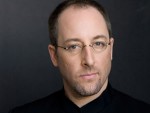Title
Though stylistic differences abound among the composers featured in Axiom’s opening concert, Jeffrey Milarsky hears a striking continuity between them. Almost as if they’re finishing each other’s musical sentences.
Body
Milarsky, Axiom’s music director and a Juilliard faculty member, will lead the ensemble in works by Harrison Birtwistle, Gyorgy Ligeti, and Mario Davidovsky in a performance on October 5. The anchoring works by Birtwistle, Secret Theatre and Three Settings of Celan, are complemented by Davidovsky’s Flashbacks and Ligeti’s Chamber Concerto, an aesthetic combination that, for Milarsky, draws connections between the sonic worlds of each composer while uncovering unexpected links between the composers themselves.
“The interesting thing about the first pair of programs this season is that the only American composer, Mario Davidovsky, can sometimes sound the most European,” Milarsky said. “Conversely, the British composer Harrison Birtwistle can occasionally be so brash and aggressive that his style begins to sound American.”
Birtwistle often places these pugnacious sounds within mysterious musical forms, and even incorporates theatrical elements to help guide the musical direction. In his 1984 piece Secret Theatre, Birtwistle divides the ensemble into two groups: one, accompaniment, its players seated; the other, soloists, its players standing. While Secret Theatre is a purely musical work, it lives up to its title by having these two groups engage in a stage drama of sorts, where musical play between soloist and accompanist shocks, alienates, and reconfigures, each instrumentalist forging new, unexpected alliances. However, like most of Birtwistle’s works, Secret Theatre’s structural mechanism is obscured by the score’s fluidity and emotional arch, prompting the composer to comment that listening to Secret Theatre is like “looking at something that is carefully constructed, but without knowing how it’s made.”
Instrumental groups also play an important role in Ligeti’s Chamber Concerto, whose musical relationship to Birtwistle’s Secret Theatre underscores Milarsky’s programmatic goal. “I always like pairing composers who seem on the surface very disparate,” Milarksy said, “but upon further examinations, they start to converge and cross. Ligeti especially has been influenced by so many different types of music, and he’s able to create canvasses that are extremely exotic.”
The 13 players in Chamber Concerto, completed in 1970, are not grouped into functional roles like solo and accompaniment as they are in the Birtwistle, but instead split into instrumental families. In this way the woodwind, brass, keyboard, and string subsections are allowed to intertwine with one another to form distinct sonic combinations. One technique Ligeti uses to achieve these structures is “micropolyphony,” a term referring to different instruments within or outside an instrumental group playing similar but not identical melodic lines or rhythmic gestures at the same time. By staggering the entries of these fragments, Ligeti generates intricate musical knots that suggest buzzing swarms of insects and galactic atmospheres.
Davidovsky’s Flashbacks, written in 1995, operates within a similarly unique timbrel world, and for Milarsky sounds like a continuation of the ethereality of Ligeti’s music, just spoken in another language. “These two composers share an approach to mood and melody, among other things,” Milarsky said. “Davidovsky’s melodies have a smooth almost ephemeral quality, sometimes with real tonal implications, which Ligeti’s also have.”
No more obvious than in Flashbacks is Davidovsky’s capacity for instrumental timbre and melodic coordination, where passages flit between instruments and bloom into dense orchestral textures. The precision and skill characterizing Davidovsky’s work also suggests to Milarsky that “he has not been given nearly the amount of recognition that he deserves,” he said. “Davidovsky’s compositions, both acoustic and electronic, are pure examples of a composer at the height of his powers.”
Paired with Axiom’s main concerts this season will also be three satellite concerts at Le Poisson Rouge, the dynamic Greenwich Village music venue. Each concert features works by the same composers included in the ensemble’s main concert dates but allows musicians to explore the composers’ chamber music repertoire instead.
“The Poisson Rouge concerts are a perfect companion for the large ensemble concerts,” Milarsky said, “because we can explore more electronic music, and more intimate music, all in a smaller setting and with a very different audience.” The group’s first concert there on October 7 features Birtwistle’s Five Distances for woodwind quintet, Davidovsky’s Duo Capriccioso for violin and piano, and Ligeti’s 10 Pieces for Winds and Horn Trio. It’s Milarksy’s goal to bring “a looser environment to these performances downtown, but the same devotion of preparation and precision that hallmarks all of Axiom’s concerts.”





